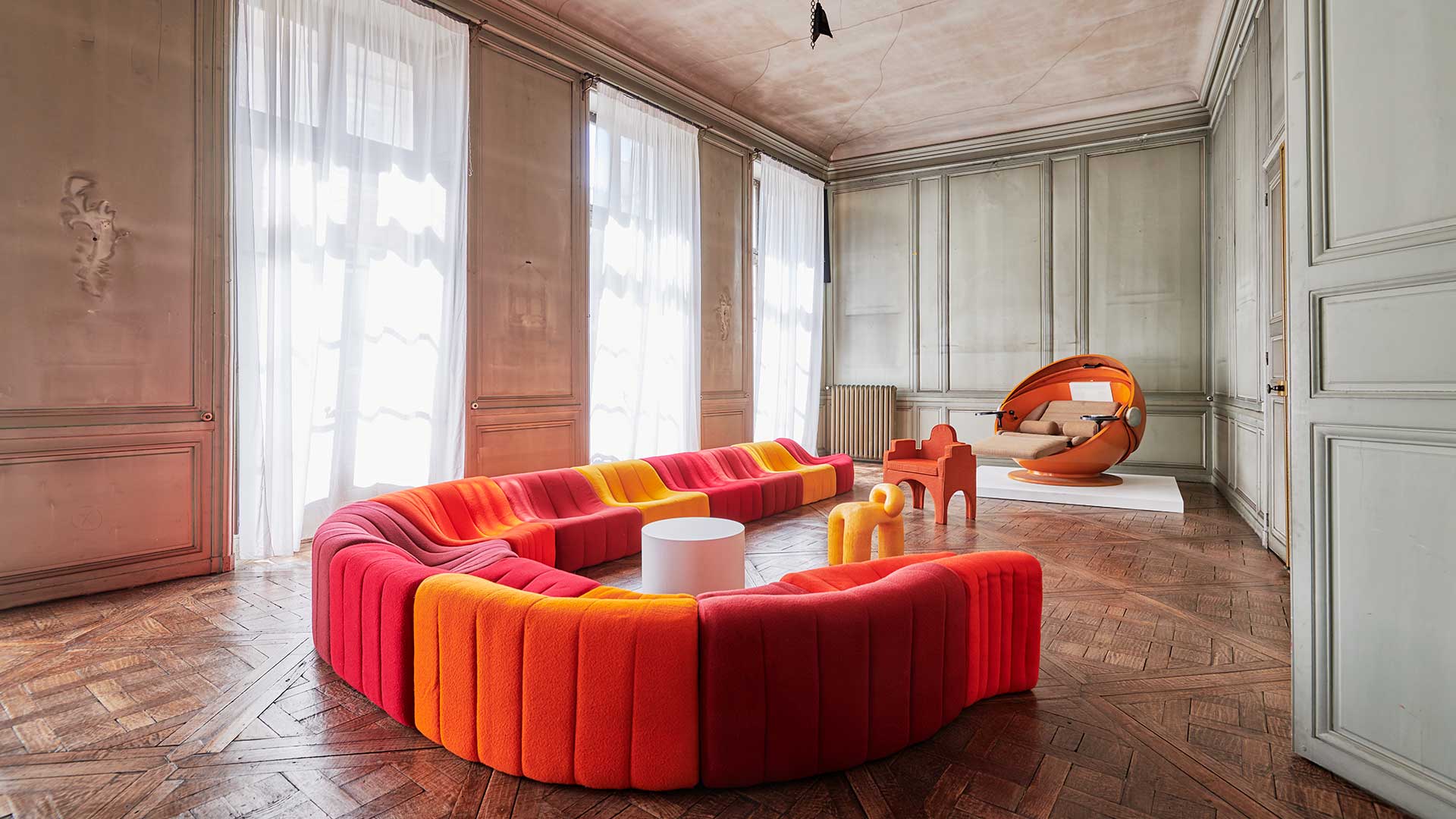From ancient Egypt to the global contemporary landscape, seats have not only evolved in form but also in function. When one traces the historical timeline through the lens of chairs, their silhouettes reflect the changing fabric of the corresponding period—ornate ones from mediaeval Europe associated with nobility or the minimal frameworks conforming to modern design dialects. One typology of seats that have long been associated with royalty or divinity is the throne, identified by the Greeks as the seat of Gods. But is a throne reserved for those with religious or political power, or has it assumed new forms to settle into new eras? The inaugural exhibition at Downtown + is a time travel from the 1950s to the present day, but in thrones: thrones where one sits to eat, discuss, rule, and relax, thrones where one lounges and others where one creates—thrones that were, thrones that are.
Conceived in 2023 upon the initiative of Paris-based Laffanour / Galerie Downtown and Luna Laffanour, Downtown + project musters pieces from the design gallery’s collection along with works by creators from the young contemporary scene. The first Downtown+ exhibition, Trônes, showcases a selection of seats from the 1950s to the present day, sourced from either the gallery’s archives or from emerging contemporary designers. These works—encompassing chair designs, armchairs, benches and sofa designs—evoke the throne and praise the sitting position through their sculptural form, history and character. From May 31 to June 3, 2023, visitors are invited to meander through the apartments of 72, rue de l’Université and are then confronted with the spectre of a past presence. New York-based contemporary artist Tim Wilson’s paintings, movie sets deprived of their protagonists, are the silent escorts of these pieces.
Over the span of a few decades, Laffanour / Galerie Downtown has shed light upon the work of 20th-century modernist architects and has gained traction for its design exhibitions of Prouvé, Perriand and Jeanneret. In an effort towards exploring the gallery’s heritage, Luna Laffanour offers a new take on these collections through a series of exhibitions, both physical and digital, where design and contemporary art will juxtapose under the same roof. To curate the inaugural exhibition of Downtown +, Laffanour turned to Romain Bitton. Together, the curatorial duo propose the exhibition as a potpourri of design pieces and paintings. “The thrones follow one another and, among the spectres, compose in their turn the memory of the place. The ghostly atmosphere becomes more pronounced as one ventures in, making the artwork a revelation of absence, in which life shines through,” reads the exhibition’s official release.
Unexpected encounters are witnessed in the exhibition space when French architect Charlotte Perriand’s chairs are placed next to Japanese architect Jun’ya Ishigami’s; Leo Orta’s creations strike a dialogue with a bench by French painter Paul Fouillen and designer Ellen Pong; and Mariette Sans- Rival’s seats complement a sofa by Kwok Hoï Chan. Tapping into a shared history of computer games and digital environments, Zyva Studio and Sam Buckley created the Hexomino Disco Chair from the 35 distinct variants of a hexomino. The Wrinkly Fish armchair by Ron Arad is donned in polished and patinated steel, while Elda 1005 by Joe Colombo uses large surfaces of plastic-reinforced fibreglass. The Elda chair draws inspiration from ship hulls and is manufactured using shipbuilding techniques—the hull is perched on a swivel base with an overlay of upholstered leather cushions.
Hailing from England and Argentina, Léo Orta lives and works in France between Paris and Les Moulins. A 2019 graduate unearths links between the visual boundaries of art and design. Through a variety of media, his work, such as the sculptural chair Pepper, questions the existential nature of human beings and examines the social and emotional connections they create within their communities and environments. The show also features Ishigami’s surrealist and burlesque Picnic chairs. Wilson’s paintings sit in the backdrop as quiet observers of the dialogue that permeates the milieu. The selected works depict movie sets sans their protagonists and evoke the seating position—accompanying the seats throughout the exhibition.
A chair is arguably one of the most difficult pieces of furniture to design, given its position amongst the most essential. Yet hundreds of prototypes are brought to life each day, emanating a unique idea, notion and expression. The semantics of the past collide with the ones of the present, striving to decipher the same entity: a chair. The display of these furniture designs in formerly inhabited spaces sends them back to their original function and poses questions about useful objects or works of art, while accentuating their sacred dimension. Trônes provides a glimpse into a diverse repository of seats in which the elemental functionality embraces the sculptural flair and viewers get an opportunity to witness—and contemplate—-how their past and present communicate; and when they do, what follows.
‘Trônes’ will be on display from May 31 to June 3, 2023, at 72, rue de L’Université in Paris, France.






 Sign in with email
Sign in with email










What do you think?